#milk poha
Explore tagged Tumblr posts
Text
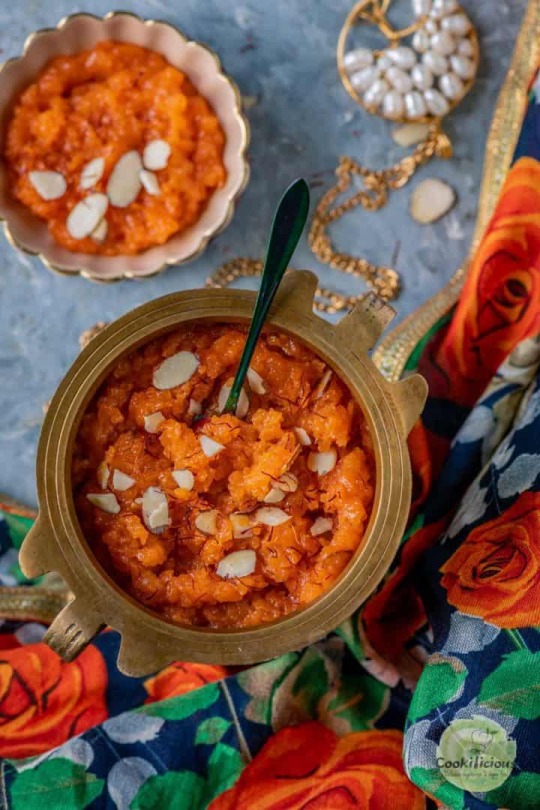
Aval Kesari (Vegan Flattened Rice Pudding)
#vegan#desserts#indian cuisine#rice pudding#aval kesari#poha#almond milk#vegan ghee#almonds#saffron#cane sugar#vegan food coloring#🧡
20 notes
·
View notes
Text
The common misconception about the term organic is that it is pesticide-free. In some cases, this is correct, but not in all. GMOs are not present in organic foods and barnyard millet. However, some studies have found that bajra flakes organic foods have higher antioxidant levels, higher levels of vitamins and minerals, and lower saturated fat [(milk)] than their conventional counterparts. For more information visit our blogs.
0 notes
Text

The Grand indian breakfast!
When the sun peeks over the horizon, it's time to dive into the deliciousness of Indian breakfast. Picture a table filled with an array of flavorful dishes, each promising a journey of taste and texture. Let's take a leisurely stroll through the delightful delights of Indian breakfast, where every bite tells a story of tradition, comfort, and pure joy.
1. Masala Dosa
First on our breakfast adventure is the iconic masala dosa, beloved across South India. Imagine a crispy, golden crepe filled with a mouthwatering mixture of spiced potatoes and onions. Dip it into coconut chutney and sambar for the perfect blend of savory flavors that dance on your taste buds.
2. Poha
Next up, we have poha, a heartwarming dish from Maharashtra. Made from flattened rice, it's cooked with onions, potatoes, and a magical mix of spices. Topped with crunchy peanuts and fresh coriander, a squeeze of lemon adds a zesty touch to this comforting breakfast bowl.
3. Aloo Paratha
For a hearty start to your day, indulge in the goodness of aloo paratha. This North Indian delight features a soft, flaky flatbread stuffed with spiced potatoes. Enjoy it with a dollop of creamy yogurt and tangy pickle for a satisfying breakfast that's bursting with flavor.
4. Upma
When time is of the essence, whip up a batch of upma – a South Indian favorite made from semolina and spices. Garnished with fragrant curry leaves and roasted cashews, it's a simple yet satisfying dish that's perfect for busy mornings.
5. Idli with Coconut Chutney
Savor the sweetness of idli, soft rice cakes that melt in your mouth. Pair them with creamy coconut chutney and tangy tomato chutney for a delightful blend of flavors that's sure to brighten your morning.
6. Dessert Breakfast. Jalebi with Rabri
Indulge your sweet tooth with jalebi, crispy spirals of sweetness soaked in sugar syrup. Enjoy them with a side of rabri, a creamy milk dessert flavored with cardamom and saffron. It's a decadent treat that's worth waking up for.
From the comforting simplicity of poha to the indulgent sweetness of jalebi, Indian breakfast offers a treasure trove of flavors and textures to explore. So, the next time you sit down to enjoy a morning meal, why not embark on a culinary journey through the wonderful world of Indian breakfast? It's a feast for the senses that will leave you feeling nourished, satisfied, and ready to take on the day ahead.

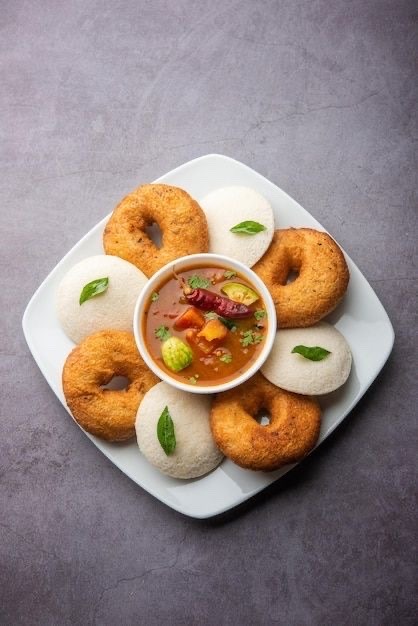
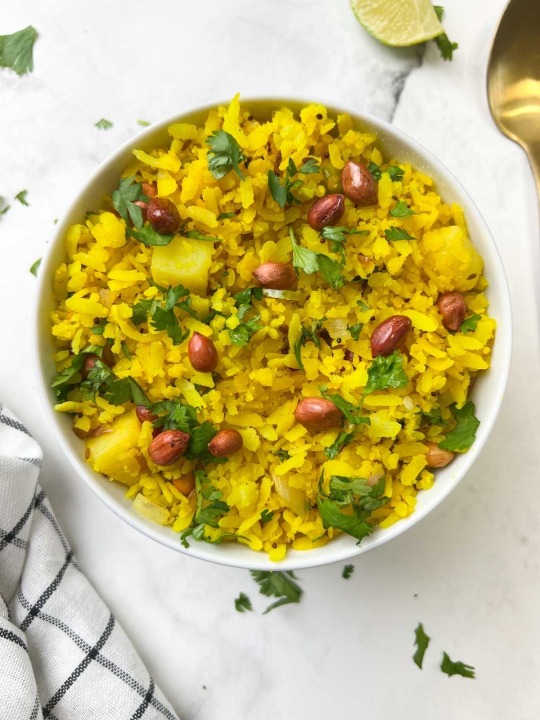
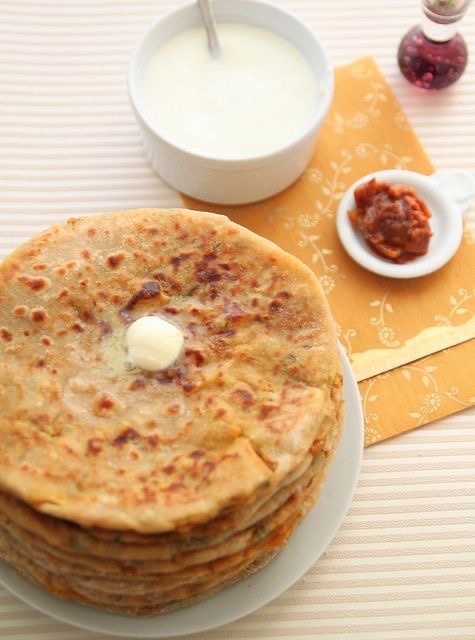
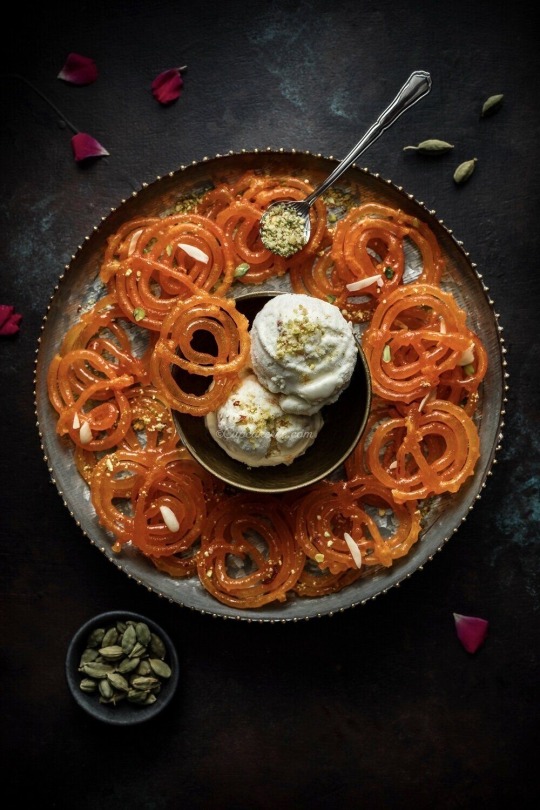
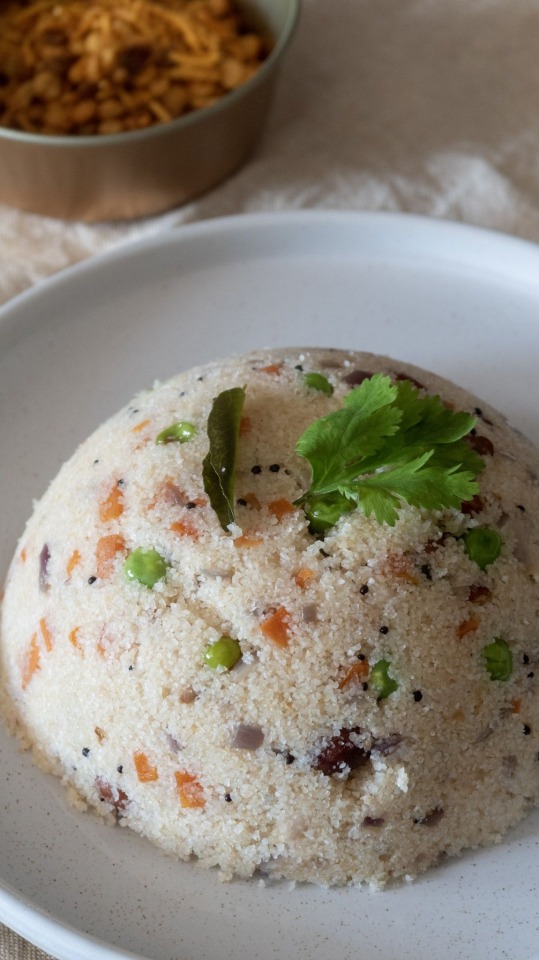
4 notes
·
View notes
Text
I love how my mum loves warm bread and toast. How bournvita reminds her of her childhood. I love how my brother cooks maggi so soupy and makes them for me too. How we used to have milk and cookies as a snack after watching some anime we both loved. How my pops made wonderful poha and fried bread crumbs and cut fruits. How my grandma still makes laddoo with raisin for all of us and my grandpa makes sure to cook sprouts whenever I visit. When I was super depressed and had an ed, my mum cooked gruel for both of us and we ate it with yogurt. When I got sick as a kid, papa made this jaggery and wheat halwa for me and since then it's been a comfort meal. On periods it's ajwayen ka Pani and in summers mango ka paana.
Both men and women cook in my close part of the family. When we honour our ancestors, we offer them sweet rice porridge and feed it to the crows that perch outside our window.
I love how food has always been a language of love for us all, in the past and through the future.. A gift to be blessed like this.
3 notes
·
View notes
Text
White Poha: A Simple and Healthy Staple for Everyday Meals

White poha, also known as flattened rice or beaten rice, is a popular and versatile ingredient in Indian kitchens. Made by parboiling rice and flattening it into thin, dry flakes, white poha is a quick-cooking and easily digestible food that forms the base for a variety of sweet and savory dishes. Loved for its lightness and adaptability, white poha is a go-to choice for breakfast, snacks, and even light dinners.
What Is White Poha?
White poha is derived from white rice, which is dehusked, steamed, and then rolled into flat, paper-like flakes. These flakes absorb water or milk easily, making them ideal for preparing quick meals. White poha comes in different thicknesses—thin, medium, and thick—each suited for specific recipes.
Nutritional Value of White Poha
Though less nutrient-dense than red poha or brown rice, white poha still offers significant nutritional benefits:
Carbohydrates: Provides a quick energy source.
Iron: Aids in boosting hemoglobin levels.
Low in Calories: Ideal for light meals and weight management.
Easily Digestible: Gentle on the stomach and suitable for all age groups.
Health Benefits of White Poha
Quick Energy Booster White poha is rich in simple carbohydrates, making it an excellent option for an instant energy boost.
Easily Digestible Its light texture and easy digestibility make white poha a preferred choice for those recovering from illnesses or looking for light meals.
Supports Weight Management When combined with vegetables, spices, and nuts, white poha becomes a low-calorie, filling dish that helps control hunger and calorie intake.
Iron-Rich Poha is often fortified with iron during processing, making it beneficial for preventing anemia, especially when paired with vitamin C-rich foods like lemon.
Popular White Poha Recipes
Kanda Poha: A savory dish made with onions, green chilies, and spices, topped with lemon juice and coriander.
Sweet Poha: A simple dessert made by mixing poha with jaggery and grated coconut.
Chivda: A crispy snack made by roasting poha with peanuts, curry leaves, and spices.
Milk Poha: Soaked poha mixed with milk, sugar, and fruits for a wholesome breakfast.
Why Choose White Poha?
White poha is not just a convenient and quick-to-cook option but also a canvas for culinary creativity. Whether you're looking for a nutritious breakfast, a light snack, or a satisfying meal, white poha fits the bill.
Conclusion
White poha is a versatile, easy-to-digest, and nutritious staple that adapts effortlessly to different tastes and cooking styles. Incorporate it into your daily diet for quick, tasty, and healthy meals!
0 notes
Text
Indian Food Diet Plan
An Indian Food Diet Plan is a wonderful way to embrace nutritious and flavourful meals while staying true to cultural traditions. This plan combines diverse ingredients, aromatic spices, and balanced nutrition to support a healthy lifestyle. Moreover, it helps you meet your wellness goals without compromising on taste or variety.
Why Choose an Indian Food Diet Plan?
Opting for an Indian Food Diet Plan offers several benefits. For instance, it emphasizes fresh, whole ingredients like vegetables, lentils, and grains. Additionally, the plan incorporates spices such as turmeric, cumin, and coriander, which are known for their health-boosting properties. Most importantly, it allows for flexibility and personalization based on your dietary needs.
Components of an Indian Food Diet Plan
To create an effective Indian Food Diet Plan, you must include a variety of essential food groups that provide balanced nutrition.
1. Vegetables and Fruits
Vegetables and fruits are vital components of an Indian Diet Plan. They supply vitamins, minerals, and antioxidants, which support overall health. For example, dishes like mixed vegetable curry or fruit salads can make it easy to meet daily nutrient requirements. Furthermore, seasonal fruits and vegetables add freshness and variety to meals.
2. Lentils and Legumes
Lentils and legumes are staples in Indian cuisine. These ingredients are excellent sources of protein, fiber, and essential nutrients. Dishes like dal (lentil curry) and chana masala (spiced chickpeas) are both nutritious and satisfying. Moreover, these options are versatile and can be incorporated into various meals.
3. Whole Grains
Whole grains such as brown rice, whole wheat, and millets form the base of many Indian meals. They provide sustained energy and are rich in fiber, aiding digestion. Additionally, traditional breads like roti or paratha can be made with whole-grain flour for added health benefits.
4. Dairy Products
Dairy products like yogurt, paneer, and milk are integral to an Indian Diet Plan. They are rich in calcium and protein, supporting bone health and muscle growth. Moreover, yogurt acts as a probiotic, improving gut health.
5. Healthy Fats
Healthy fats from sources such as ghee, coconut oil, and nuts are essential for brain function and overall well-being. These fats should be used in moderation to enhance the flavor of dishes without compromising on health.
How to Create an Indian Food Diet Plan
Step 1: Set Your Goals
Firstly, determine your objectives. Are you aiming for weight loss, muscle gain, or improved overall health? Setting clear goals will help you tailor your Indian Diet Plan accordingly.
Step 2: Plan Balanced Meals
When planning meals, ensure they include a mix of carbohydrates, proteins, and healthy fats. For example:
Breakfast: Masala oats with a side of fresh fruit.
Lunch: Brown rice with rajma (kidney bean curry) and a green salad.
Dinner: Grilled paneer with roti and a vegetable stir-fry.
Snacks: Roasted chickpeas or a handful of mixed nuts.
Step 3: Meal Prep
Preparing meals in advance can save time and ensure consistency. For instance, cooking large batches of dal or curry allows you to store portions for later use. Additionally, having pre-cut vegetables and ready-made spice mixes can make cooking quicker and more convenient.
Tips for Sticking to an Indian Food Diet Plan
Start Small: Introduce one or two healthy dishes at a time to make the transition easier.
Be Flexible: Allow for occasional indulgences, such as a small serving of dessert, to avoid feelings of restriction.
Stay Hydrated: Drink plenty of water throughout the day to support digestion and overall health.
Monitor Portions: Even healthy foods can lead to weight gain if consumed in large quantities. Use smaller plates and serving spoons to control portions.
Sample One-Day Indian Diet Plan
Here is a sample plan to inspire your Indian Diet Plan:
Breakfast: Poha (flattened rice) with peanuts and a cup of masala chai.
Morning Snack: A banana and a handful of almonds.
Lunch: Whole-wheat chapati with mixed vegetable curry and a side of raita (yogurt with spices).
Afternoon Snack: Cucumber and carrot sticks with mint chutney.
Dinner: Quinoa pulao with grilled fish or tofu and a bowl of soup.
Dessert (optional): A small piece of jaggery or date-based sweet.
Overcoming Challenges in an Indian Diet Plan
Managing Time
Time constraints often make it difficult to stick to a diet plan. However, by preparing ingredients in advance and using simple recipes, you can save time. Furthermore, investing in kitchen tools like pressure cookers and food processors can speed up cooking.
Dealing with Cravings
Cravings for fried or sugary foods can be challenging. To manage this, keep healthy snacks like roasted nuts or fruit on hand. Additionally, you can prepare baked versions of popular snacks, such as samosas or pakoras.
Eating Out
Eating out while following an Indian Food Diet Plan requires mindful choices. Opt for dishes that are grilled, steamed, or lightly sautéed. Moreover, request less oil or butter when ordering at restaurants.
Benefits of an Indian Diet Plan
Following an Indian Diet Plan can enhance your life in many ways. For instance:
Improved Digestion: The use of spices like cumin and fennel promotes better digestion.
Weight Management: Balanced meals help control calorie intake without compromising on taste.
Enhanced Immunity: Ingredients like turmeric and garlic boost the body’s immune response.
Mental Well-being: A nutrient-rich diet supports brain health and reduces stress levels.
Conclusion
An Indian Food Diet Plan is not only a journey toward better health but also an opportunity to celebrate the richness of Indian cuisine. By including a variety of nutritious ingredients and staying consistent, you can achieve your wellness goals while enjoying delicious meals. Start planning today, and experience the numerous benefits of embracing a well-rounded Indian Food Diet Plan.
1 note
·
View note
Text
Price: [price_with_discount] (as of [price_update_date] - Details) [ad_1] "Want a right start to the day? Help yourself to a bowlful of nutritious & tasty Quaker. These 100% Natural Wholegrain Oats have complex carbohydrates that breaks down slowly to provide energy that lasts. It also is a rich source of fibre and source of protein. As part of a diet low in saturated fat, sodium and cholesterol, alongwith a healthy & active lifestyle consumption of 2 bowls of Oats everyday giving 3g soluble fiber Beta glucan may help reduce cholesterol. It helps maintain weight. Try them with milk, topped with fruits and nuts for a hearty crunch, or with honey, cinnamon, or brown sugar for a warming sweet flavor. Quaker Oats can be eaten sweet or savoury. or Add them as a wholesome ingredient in your favorite dishes, such as Idli or Poha or Masala Oats or Classic Oatmeal cookies. Enjoy the wholesome benefits of this whole grain in any number of meals or snacks, any time of day." From the Publisher Add to Cart Customer Reviews 4.4 out of 5 stars 31,289 4.2 out of 5 stars 1,531 4.2 out of 5 stars 1,531 4.4 out of 5 stars 2,010 4.1 out of 5 stars 1,089 Price ₹161.00₹161.00 — — ₹190.00₹190.00 — Wholegrains ✓ ✓ ✓ ✓ ✓ Source of protein & fibre ✓ ✓ ✓ ✓ ✓ Nutritious energy ✓ ✓ ✓ ✓ ✓ Flavour Plain Flavoured Flavoured Plain + 4 grains Flavoured Cooking time 3 minutes No cooking needed No cooking needed 4 minutes 3 minutes [ad_2]
0 notes
Text
Poha oats
Poha Oats is a nutritious and versatile combination of two popular Indian breakfast staples: poha (flattened rice) and oats. This fusion dish blends the lightness and flavor of poha with the health benefits of oats, making it a wholesome and filling meal option for health-conscious individuals.
Nutritional Benefits:
Rich in Fiber:
Oats are an excellent source of dietary fiber, promoting digestion and gut health.
Poha provides a lighter carbohydrate option with quick energy release.
Good Source of Protein:
Oats contain plant-based protein, which is vital for muscle repair and growth.
Low in Calories:
A great option for those managing weight while staying full longer.
Iron Content:
Poha is a good source of iron, which helps prevent anemia.
Heart Health:
The beta-glucan in oats helps reduce cholesterol levels.
Preparation Ideas:
Savory Poha Oats:
Ingredients: Poha, rolled oats, onions, green chilies, curry leaves, turmeric, and spices.
Method: Cook oats and poha together with sautéed vegetables and spices for a flavorful breakfast.
Sweet Poha Oats:
Ingredients: Poha, oats, milk, jaggery or honey, and fruits like banana or berries.
Method: Cook oats with milk and poha, sweeten with jaggery, and top with fruits.
Masala Poha Oats:
Add Indian spices like cumin, coriander, and red chili powder for a spicier version.
Health Benefits of Poha Oats:
Weight Management:
High in fiber and low in fat, it keeps you full and reduces unhealthy snacking.
Energy Boost:
Provides a sustained release of energy, making it ideal for an active day.
Diabetic-Friendly:
Oats help regulate blood sugar levels, and poha offers a low-glycemic-index alternative.
Easy Digestibility:
Both poha and oats are gentle on the stomach, suitable for all age groups.
Why Choose Poha Oats?
Quick and easy to prepare.
A versatile dish that can be adapted to sweet or savory preferences.
Combines traditional Indian flavors with modern nutritional benefits.
Conclusion:
Poha Oats is an ideal meal for those looking to balance taste and health. It is a perfect blend of traditional and contemporary nutrition, offering a delicious way to start the day or enjoy a light meal.
0 notes
Text
Popular Food to Try in Ujjain

Ujjain, a city famous for its temples, is also great for food lovers. When you visit, try the Popular Food to Try in Ujjain, which reflects its rich food traditions.
Dal Bafla: A local favourite, this is a variation of dal-baati, where wheat dumplings are baked and served with spicy lentils and ghee.
Poha-Jaleb: Ujjain’s breakfast is poha-jalebi. Flattened rice cooked with spices and crispy sugary jalebis.
Bhutte Ka Kees: A MP speciality, this is grated corn cooked with milk, spices and a hint of coconut. Sweet and savoury.
Sabudana Khichdi: A fasting special, this is a light and tasty preparation of tapioca pearls sautéed with peanuts and spices.
Snacks and Sweets: Markets are full of kachoris, samosas and pani puris. But are you a Sweet tooth? Try malpuas and shrikhand from famous sweet shops.
Lassi and Shikanji: Finish off with a glass of chilled lassi or tangy shikanji. Both are available everywhere in the city.
0 notes
Text
Bhagalpuri Poha Online: Authentic Katarni Chura at Your Fingertips

Bhagalpuri Katarni Chura, often referred to as poha, is a treasured delicacy from the culturally rich region of Bhagalpur, Bihar. Known for its distinct aroma, soft texture, and unmatched quality, this traditional flattened rice is a favorite for creating both savory and sweet dishes. Now, with the convenience of online shopping, you can easily buy Bhagalpuri Poha Online and bring the authentic taste of Bihar to your home.
What Makes Bhagalpuri Poha Unique?
Bhagalpuri poha is crafted from the premium-quality Katarni rice grown exclusively in the fertile fields of Bhagalpur. This rice is celebrated for its unique fragrance and nutritional value. When transformed into poha, it retains its light, fluffy texture, making it ideal for dishes like dahi-poha or the ever-popular poha matar.
Benefits of Buying Bhagalpuri Poha Online
Convenience: With online platforms, you can easily order Katarni Chura from anywhere in India and receive it at your doorstep.
Authenticity: Trusted sellers ensure that the poha you receive is sourced directly from Bhagalpur.
Freshness Guaranteed: Proper packaging keeps the product fresh and retains its original aroma and flavor.
Why Choose Bhagalpuri Poha?
Healthy Choice: Rich in essential nutrients and low in fat, making it a wholesome addition to your meals.
Versatile: Perfect for breakfast, snacks, or festive preparations.
Traditional Flavor: Brings the authentic taste of Bihar’s culinary heritage to your kitchen.
How to Enjoy Bhagalpuri Poha
Classic Dahi-Poha: Mix the poha with fresh curd and jaggery for a simple yet delightful meal.
Savory Poha: Toss it with onions, green chilies, and mustard seeds for a quick snack.
Sweetened Treat: Add milk, sugar, and nuts for a comforting dessert.
Order Bhagalpuri Poha Online Today
Experience the tradition and richness of Bhagalpur with Bhagalpuri Poha Online. Enjoy the ease of ordering and the joy of savoring fresh, authentic Katarni Chura in the comfort of your home.
"Rediscover the flavors of Bihar with authentic Bhagalpuri Poha – now just a click away!"
0 notes
Text
How to lose fat quickly
Losing fat quickly can be challenging, but with the right approach, you can see noticeable results in a short time. Here’s a straightforward guide to help you shed fat efficiently and safely.
1. Create a Caloric Deficit
What is a Caloric Deficit? A caloric deficit happens when you eat fewer calories than your body needs, prompting it to burn stored fat for energy and leading to weight loss.
How to Create a Deficit:
Calculate Your Needs: Use an online calorie calculator to estimate your daily caloric needs based on your age, weight, height, and activity level.
Reduce Calories: Aim to consume about 500-750 fewer calories per day than your maintenance level. This deficit can help you lose about 1-1.5 pounds (0.45-0.68 kg) per week.
2. Eat a Balanced, Nutrient-Dense Diet
Focus on Quality:
Protein: Add lean sources like chicken, fish, beans, and tofu to your meals. They build muscle and keep you satisfied longer.
Vegetables: Load up on colorful vegetables. They are low in calories but high in vitamins, minerals, and fiber.
Whole Grains: Choose brown rice, quinoa, and oats for a nutritious, filling boost.
Avoid These Foods:
Sugary Snacks: Limit candies, pastries, and sugary drinks.
Processed Foods: Steer clear of processed foods that are high in unhealthy fats and sodium.
3. Increase Physical Activity
Cardio Workouts:
Moderate Cardio: Engage in activities like brisk walking, cycling, or swimming.
High-Intensity Interval Training (HIIT): Short bursts of intense exercise followed by rest periods can burn a lot of calories in less time.
Strength Training:
Build Muscle: Incorporate weight lifting or bodyweight exercises (like squats and push-ups) 2-3 times a week.
4. Stay Hydrated
Drink Water:
Water Intake: Aim to drink about 8 cups (2 liters) of water a day. Staying hydrated helps with metabolism and can curb hunger.
Limit Sugary Beverages: Avoid sodas, energy drinks, and sugary coffees that add unnecessary calories.
5. Get Adequate Sleep
Importance of Sleep:
Rest and Recovery: Strive for 7-9 hours of deep, restful sleep each night.
Sleep Tips:
Create a Relaxing Environment: Keep your bedroom dark, cool, and quiet to improve sleep quality.
6. Manage Stress Effectively
Stress-Relief Techniques:
Relaxation Methods: Practice deep breathing, meditation, or yoga to help manage stress levels.
Hobbies: Engage in activities that you enjoy, such as reading or gardening, to take your mind off stress.
7. Be Consistent and Patient
Consistency is Key:
Stick to Your Plan: Follow your diet and exercise routine consistently for the best results.
Monitor Progress: Track your progress with a journal or app to stay motivated and make adjustments as needed.
Patience:
Set Realistic Goals: Quick fat loss is possible, but it’s important to have realistic expectations. Aim for gradual, steady progress rather than dramatic, short-term changes.
Diet plan:
Breakfast:
Option 1: 1 bowl of vegetable upma or poha with a cup of green tea.
Option 2: 1-2 whole wheat parathas with a small serving of curd.
Mid-Morning Snack:
Option 1: A small bowl of fruit salad (like apple, papaya, or orange).
Option 2: A handful of almonds or walnuts.
Lunch:
Option 1: 1-2 chapatis with a serving of dal (lentils) and a side of mixed vegetable curry.
Option 2: Brown rice with a serving of chicken or tofu curry and a side of cucumber salad.
Afternoon Snack:
Option 1: A cup of buttermilk or green tea.
Option 2: Carrot and cucumber sticks with a small portion of hummus.
Dinner:
Option 1: 1-2 chapatis with a serving of paneer or vegetable curry and a small bowl of salad.
Option 2: A bowl of clear vegetable soup with a side of mixed greens salad.
Before Bed:
Option 1: A cup of warm milk (optional, can be almond or skim milk).
Option 2: A small handful of nuts or seeds.

Tasty Tea “eats through” 57lbs of thick flab
Conclusion
Losing fat quickly requires a combination of creating a caloric deficit, eating a balanced diet, increasing physical activity, staying hydrated, getting enough sleep, managing stress, and maintaining consistency. By following these guidelines and staying dedicated, you can achieve your fat loss goals effectively and healthily. Remember, sustainable changes lead to lasting results.
#weightloss#weight loss#mountain tea#mountain weightloss tea#weightloss tea#stomachfat#stomach#fat#fast fatloss
1 note
·
View note
Text
Top 10 Popular Street Foods of Varanasi

Varanasi, one of the oldest continuously inhabited cities in the world, offers a rich tapestry of culinary delights. The city’s street food reflects its cultural diversity and historical depth, offering a variety of flavors and textures that are a treat to the senses. Varanasi’s street food scene is a vibrant mix of flavors, textures, and traditions. From the spicy and tangy Tamatar Chaat to the creamy, dreamy Malaiyo, the city offers a culinary journey that is as rich and diverse as its history. Each dish tells a story of the city’s cultural heritage, making every bite a unique experience. Whether you are a food connoisseur or a curious traveler, the street foods of Varanasi promise a gastronomic adventure that is both satisfying and unforgettable.
Kachori Sabzi: Kachori Sabzi is a quintessential Varanasi breakfast, loved by locals and tourists alike. This dish consists of round, flaky pastries called kachoris, stuffed with a spicy mixture of lentils or urad dal. These are deep-fried until golden and crispy. The kachoris are served with a piping hot, tangy, and spicy potato curry (sabzi) that perfectly complements the rich, flaky pastry. A variant called choti kachori, smaller in size, is also popular. The dish is often garnished with green chilies and coriander, making it a perfect blend of flavors and textures.
Chena Dahi Vada: A unique twist on the traditional dahi vada, the Chena Dahi Vada of Varanasi is made from chena (paneer or fresh cottage cheese). These soft, fluffy vadas are soaked in chilled, creamy yogurt and topped with a drizzle of sweet tamarind chutney, spicy green chutney, and a sprinkle of chaat masala and roasted cumin powder. The result is a delightful balance of sweet, spicy, and tangy flavors, combined with the melt-in-the-mouth texture of the vadas.
Tamatar Chaat: Tamatar Chaat is a spicy and tangy street food unique to Varanasi. Made from mashed tomatoes cooked with boiled potatoes, spices, and green chilies, this chaat is a burst of flavors. The mixture is garnished with sev (crunchy chickpea noodles), chopped onions, fresh coriander, and sometimes pomegranate seeds. It's served hot, making it a perfect snack for any time of the day. The combination of soft tomatoes, crispy sev, and aromatic spices makes Tamatar Chaat an irresistible treat.
Baati Chokha: Baati Chokha is a traditional dish from the region, often associated with rustic, village-style cooking. Baati are round wheat flour dough balls, baked or roasted until they are crisp on the outside and soft inside. They are typically served with chokha, a mashed vegetable preparation made from roasted eggplant (baingan), tomatoes, and potatoes, flavored with mustard oil, garlic, and green chilies. This dish is usually enjoyed with a dollop of ghee (clarified butter) on the baati, enhancing its rich flavor and making it a wholesome meal.
Malaiyo: A seasonal delicacy available only during the winter months, Malaiyo is a light and airy dessert that captures the essence of Varanasi. It is made by churning milk and cream overnight and letting it sit under the open sky to collect dew. The next morning, it is flavored with saffron, cardamom, and a hint of sugar, resulting in a frothy, creamy concoction that melts in the mouth. Often garnished with pistachios and almonds, Malaiyo is a testament to the culinary artistry and tradition of the city.
Chura Matar: Chura Matar is a simple yet flavorful dish made from flattened rice (poha) and fresh green peas. The poha is lightly sautéed with peas, mustard seeds, cumin, green chilies, ginger, and a dash of lemon juice. This dish is often enjoyed during the winter season when fresh peas are abundant. It's garnished with coriander leaves and sometimes grated coconut, offering a refreshing, light, and healthy snack that's both filling and delicious.
Banarasi Paan: While not a food in the traditional sense, Banarasi Paan is an integral part of Varanasi's street food culture. A betel leaf filled with a mixture of areca nut, slaked lime, and various sweet and savory condiments, Banarasi Paan is a post-meal treat that aids digestion and leaves a refreshing taste in the mouth. There are many variations, including meetha (sweet) and sada (plain), each offering a unique experience. The art of making and serving paan is a skill passed down through generations, making it a cultural as well as a culinary delight.
Thandai: Thandai is a traditional cooling beverage that holds a special place in Varanasi’s food culture, especially during festivals like Holi and Mahashivratri. This drink is made from a mixture of milk, sugar, almonds, fennel seeds, watermelon seeds, rose petals, pepper, cardamom, saffron, and poppy seeds. The ingredients are ground into a fine paste and mixed with milk to create a rich, aromatic drink. Sometimes, bhang (cannabis) is added during certain festivals, making it a unique and celebratory beverage. Served chilled, Thandai is both refreshing and nourishing.
Lassi: Varanasi's lassi is a rich, creamy yogurt-based drink, often enjoyed as a refreshment on hot days. This thick, frothy beverage is sweetened with sugar and flavored with rose water or cardamom. It’s usually topped with a generous dollop of malai (cream) and sometimes garnished with dry fruits like almonds and pistachios. Served in traditional earthenware cups, lassi in Varanasi is not just a drink but an experience that reflects the city’s culinary heritage.
Jalebi: No exploration of Varanasi’s street food is complete without indulging in the syrupy sweetness of Jalebi. Made from a batter of fermented flour, these spirals are deep-fried until crispy and then soaked in sugar syrup flavored with saffron or cardamom. Jalebis are best enjoyed hot and fresh, offering a delightful contrast of textures with a crispy exterior and a juicy, syrupy interior. Often paired with Rabri (thickened sweetened milk) for an extra indulgence, Jalebis are a popular treat enjoyed by people of all ages.
In order to explore culinary variety and taste popular dishes, opt for Varanasi Food Tour by Optima Travels. Culinary tours of Varanasi are conducted either in the morning or in the evening. Both the time, different dishes are prepared for the foodies. For example, Malayyio is available only in the morning, that too in wee hours of the winter season. Similarly, Chaat is prepared in the evening. On the contrary, Paan is available every time.
0 notes
Text
White Poha: A Versatile and Nutritious Breakfast Option
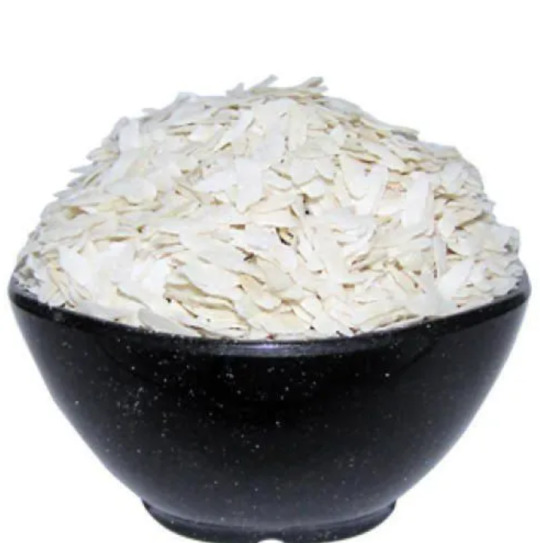
Introduction
White poha, also known as flattened rice, is a popular breakfast ingredient in India. Known for its versatility, ease of preparation, and nutritional benefits, white poha is a staple in many households. This article will explore the various aspects of white poha, from its nutritional value to its culinary uses, and provide you with some delicious recipes to try at home.
What is White Poha?
White poha is made by parboiling rice, which is then flattened and dried to create thin, lightweight flakes. These flakes can be easily rehydrated with water or other liquids, making them a convenient ingredient for quick meals. White poha is often used in traditional Indian breakfast dishes and snacks.
Nutritional Value of White Poha
White poha is a good source of carbohydrates, providing energy for the day. It is low in fat and contains essential vitamins and minerals. Here’s a breakdown of its nutritional content per 100 grams:
Calories: 130 kcal
Protein: 2.5 grams
Carbohydrates: 28 grams
Fat: 0.5 grams
Fiber: 1 gram
Iron: 1.5 mg
Calcium: 10 mg
Health Benefits of White Poha
Easy to Digest
White poha is easy to digest, making it an ideal breakfast option for people of all ages. Its light texture and mild flavor are gentle on the stomach.
Rich in Carbohydrates
As a good source of carbohydrates, white poha provides a quick energy boost, making it perfect for starting your day or replenishing energy levels after a workout.
Low in Calories
White poha is low in calories, which makes it a great option for those looking to maintain or lose weight. It can be part of a balanced diet without contributing to excessive calorie intake.
Gluten-Free
White poha is naturally gluten-free, making it a safe choice for individuals with gluten intolerance or celiac disease.
Versatile and Convenient
White poha can be prepared in various ways, from savory dishes to sweet treats. Its quick cooking time and versatility make it a convenient ingredient for busy mornings.
Culinary Uses of White Poha
Traditional Poha
One of the most popular ways to enjoy white poha is by making the traditional dish called poha. This dish typically includes white poha mixed with onions, mustard seeds, curry leaves, and spices. It is often garnished with fresh cilantro and a squeeze of lemon juice.
Poha Upma
Similar to traditional upma, poha upma is made by sautéing white poha with vegetables, spices, and herbs. It’s a flavorful and nutritious breakfast option.
Sweet Poha
For a sweet variation, white poha can be cooked with milk, sugar, and cardamom to create a delicious dessert or snack. Adding nuts and dried fruits can enhance the flavor and nutritional value.
Poha Chivda
Poha chivda is a popular Indian snack made by roasting white poha with peanuts, curry leaves, and spices. It’s a crunchy and savory treat that can be enjoyed any time of the day.
Poha Idli
For a twist on the traditional idli, white poha can be used in the batter along with rice and urad dal. This variation results in soft and fluffy idlis that are perfect for breakfast.
How to Cook White Poha
Preparation
Before cooking, white poha should be rinsed under running water for a few seconds. This helps remove any dust or impurities and softens the flakes.
Cooking
Once rinsed, white poha can be cooked with minimal ingredients. For a basic recipe, heat oil in a pan, add mustard seeds, cumin seeds, and curry leaves. Add chopped onions, green chilies, and any other vegetables you like. Stir in the white poha and cook until everything is well combined. Season with salt and garnish with fresh cilantro and lemon juice.
Tips for Perfect Poha
Avoid Over-Soaking: White poha should not be soaked for too long, as it can become mushy. A quick rinse is usually sufficient.
Use Fresh Ingredients: Fresh vegetables and herbs enhance the flavor and nutritional value of poha.
Season Well: Proper seasoning with spices and herbs is key to making delicious poha.
FAQs About White Poha
Is white poha healthy? Yes, white poha is healthy as it is low in calories, easy to digest, and provides a good source of carbohydrates.
Can I eat white poha for weight loss? Yes, white poha can be included in a weight loss diet due to its low calorie and high satiety value.
How should I store white poha? Store white poha in an airtight container in a cool, dry place to keep it fresh.
Can I make white poha ahead of time? Yes, white poha dishes can be prepared ahead of time and stored in the refrigerator for a quick meal.
Is white poha gluten-free? Yes, white poha is naturally gluten-free.
What are some variations of white poha dishes? You can make traditional poha, poha upma, sweet poha, poha chivda, and poha idli with white poha.
Conclusion
White poha is a versatile and nutritious ingredient that can be used in various dishes to create delicious and healthy meals. Its ease of preparation, along with its nutritional benefits, makes it a perfect choice for breakfast or snacks. Whether you prefer it savory or sweet, white poha offers a multitude of culinary possibilities that can fit into any diet.
0 notes
Text
Expectant Women Based on Easily Available Ingredients During Lockdown

Nutrition is a key factor for a healthy pregnancy. However, given the lockdown and the difficulty of food supply or food supply chains being adversely affected, many may not have access to all kinds of food items. Therefore, to ensure proper nutrition, we have listed down a pregnancy diet plan based on the easily available ingredients during the lockdown.
Here is a list of different breakfast, lunch, dinner, and mid-day snack options. These options will not only provide you good nutrition for a healthy pregnancy but will also help you boost your immune system amidst this corona virus outbreak.
Breakfast: • A glass of milk with one of the following: poha, upma, dosa, steamed idli, oats, boiled eggs, etc
Lunch and Dinner Vegetarian: • Rice or Roti with dal, dahi and vegetables, or simple vegetable khichdi with dahi • Stuffed vegetable paratha (eg. Aloo paratha, methi paratha, cabbage paratha, palak paratha, etc) with dahi
Non-Vegetarian: • Rice or roti with egg curry, chicken curry, fish curry (like prawns, Bombay ducks, or whatever is available and safe to consume) and vegetables • Steamed or baked fish with millets or quinoa salad. • Chicken soup with salad and whole wheat bread
Mid-Day snacks • Oat bars • A bowl of sprouts • A bowl of fresh fruits or a handful of dry fruits, nuts and seeds. • Vegetable fingers with nut butters popcorn, fox nuts, khakhara, dhokla
Stay Hydrated
It’s important to stay hydrated during pregnancy, hence make sure you drink lots of water. Adequate intake of water will decrease constipation, decrease the risk of urinary tract infection, reduce swelling due to oedema, soften your skin, and keep you cooler.
Foods and Beverages to Avoid During Pregnancy Pay close attention to what you eat, and avoid the following food items and beverages in your diet during pregnancy:
• Unwashed fruits and vegetables • Unpasteurized milk • Shellfish • Undercooked or raw fish like sushi and meat or eggs • Caffeine • Alcohol • Processed Junk Foods
Pregnancy is a beautiful phase of life, so all the expecting women stay at home, be safe, and enjoy the upcoming motherhood. If you need help or have questions with your nutrition plan — feel free to consult Kanupriya Khanna. A female fertility nutritionist in Delhi — Kanupriya will not only help you with a good diet plan, but will also help you stay calm and healthy during the lockdown.
0 notes
Text
Red Poha: A Nutritious and Versatile Superfood

Red poha, or flattened red rice, is a nutrient-rich and healthier alternative to regular white poha. Made from red rice, this flattened rice retains the outer bran layer, which is packed with fiber, vitamins, and minerals. Popular in Indian kitchens, red poha is known for its nutty flavor, chewy texture, and ability to adapt to a variety of sweet and savory recipes.
What Is Red Poha?
Red poha is produced by parboiling red rice, flattening it into thin flakes, and then drying it. These flakes absorb water easily and cook quickly, making red poha a convenient ingredient for quick meals. Its distinctive reddish-brown color comes from anthocyanins in the bran layer, which also provide antioxidants and other health benefits.
Nutritional Value of Red Poha
Red poha is a powerhouse of nutrients, including:
Fiber: Supports digestion and helps maintain satiety.
Iron: Improves hemoglobin levels and prevents anemia.
Vitamin B: Boosts energy and supports metabolism.
Antioxidants: Protect against free radical damage.
Complex Carbohydrates: Provides sustained energy.
Health Benefits of Red Poha
Supports Weight Management The high fiber content in red poha promotes fullness, reducing hunger pangs and aiding in weight management.
Regulates Blood Sugar Levels Red poha’s complex carbohydrates release sugar slowly into the bloodstream, making it a diabetic-friendly food.
Improves Digestion Its fiber helps prevent constipation, supports gut health, and ensures smoother digestion.
Boosts Immunity The antioxidants and vitamins in red poha help strengthen the immune system and combat oxidative stress.
Enhances Heart Health Low in fat and high in fiber, red poha contributes to reducing cholesterol levels, promoting better cardiovascular health.
How to Use Red Poha
Red poha can be used in various recipes, from traditional Indian dishes to innovative healthy snacks.
Breakfast Dishes: Prepare poha upma with vegetables, peanuts, and spices for a wholesome start to your day.
Sweet Dishes: Make jaggery-based poha or mix it with grated coconut for a healthy dessert.
Snacks: Use red poha to create nutritious chivda or energy balls.
Smoothie Bowls: Soak red poha in milk or yogurt and add fruits, nuts, and seeds for a quick meal.
Conclusion
Red poha is a versatile and nutrient-dense ingredient that deserves a place in every kitchen. Its health benefits, combined with its adaptability in recipes, make it a perfect choice for anyone looking to maintain a balanced and healthy diet. Incorporate red poha into your meals for a delicious and nutritious experience!
0 notes
Text
poha oats
Poha oats are a wholesome and nutritious breakfast option that combines the traditional Indian poha (flattened rice) with the health benefits of oats. This fusion dish offers a delightful balance of taste and nutrition, making it a popular choice for health-conscious individuals seeking a quick and easy meal to start their day.
Key Benefits of Poha Oats:
Rich in Nutrients: Poha oats provide a good source of essential nutrients, including fiber, protein, vitamins, and minerals. Oats are known for their heart-healthy properties, as they contain beta-glucan, a type of soluble fiber that helps lower cholesterol levels. Poha adds carbohydrates, which provide the body with a quick energy boost.
Low in Calories: This dish is low in calories, making it an excellent choice for those looking to manage their weight. The combination of poha and oats provides a filling meal that keeps hunger at bay without adding excessive calories.
Easy to Digest: Both poha and oats are easy to digest, making poha oats suitable for all age groups, including children and the elderly. They are gentle on the stomach and can be consumed without the risk of digestive discomfort.
Quick and Easy to Prepare: Poha oats are quick to prepare, requiring minimal cooking time. They can be customized with various vegetables, spices, and toppings to suit individual tastes. Popular additions include onions, tomatoes, green peas, curry leaves, and a squeeze of lemon for added flavor.
Versatile and Adaptable: This dish can be modified to suit different dietary preferences. For a protein-rich version, one can add nuts, seeds, or a boiled egg. For a vegan option, it can be cooked with water or plant-based milk.
0 notes